#Rashnu
Explore tagged Tumblr posts
Text










GENSHIN IMPACT | Flowers and Dreams (LUMINE VER.)
“Ever beheld blossoms more dazzling than fireworks, or cherished memories more tender than the sweetest dreams? As the sun and moon rise in turn, the trees and grasses shall forever remember this moment.”
#genshin impact#genshinimpactedit#genshinedit#gamingedit#genshinet#dailygaming#homuras#nahida#kusanali#lumine#paimon#candace#nilou#sorush#mihir#rashnu#kaveh#mine
177 notes
·
View notes
Text
I love them! Happy birthday Nahida! You deserve praise and love! I am glad that the Pari and Aranara are present here! 🥰🥰🥰






#genshin impact#traveler#paimon#raiden shogun#zhongli#nahida#venti#furina#neuvillette#kaveh#alhaitham#candace#dehya#layla#pari#collei#cyno#tighnari#sethos#sorush#rashnu#aranara#mihir#dunhyazard#faruzan#wanderer#nilou#sumeru crew
47 notes
·
View notes
Text

More druid drawings. Trying to actually get around to every single one of them.
My Rashnu headcanon is that he's a summoner. Pictured, summoning Nanghaithya.
Also playing with the idea that every "school" of summoning has different hand gestures for the summon. If/when I try to draw Elini she'll have a different one.
10 notes
·
View notes
Text

TADA~✨🌼 Say hi to Sraousha and Rashnu! Sraousha and Rashnu are the little brothers 🌚
Sraousha is the messenger between Ahura Mazda and the other gods, and Rashnu is the god of judge who pass judgment on the souls of people after death 🌝 I'll definitely introduce them fully in the next posts *^*/
#oc#original character#Mithra#Sraosha#Rashnu#ancient goddesses#ancient gods#ancient persia#art#drawing#traditional art#traditional drawing#color pencil#artwork#artists on tumblr#illustration#angel#angels#sheep#BABAEE
8 notes
·
View notes
Text
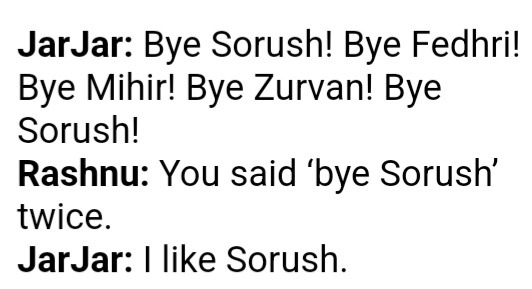
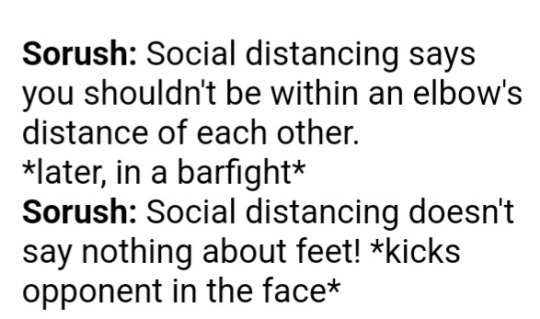





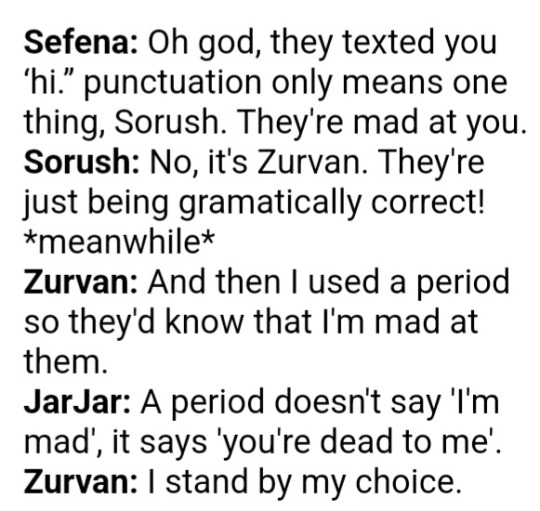


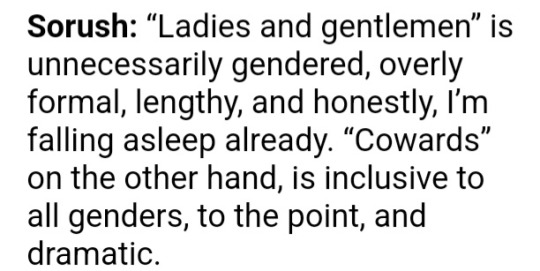









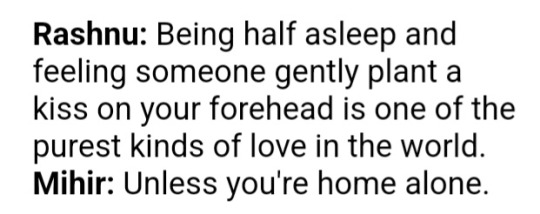



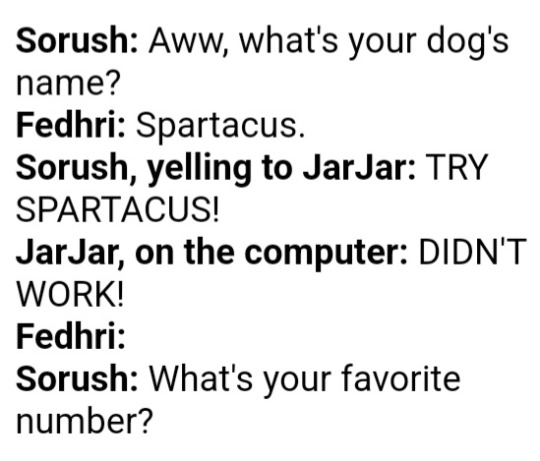


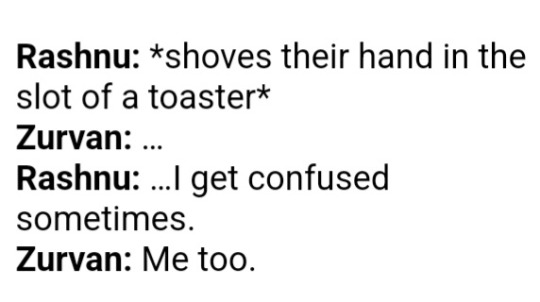


Have a LOT of incorrect quotes featuring all the (Named) Pari Characters... they are absolute chaos.
#OCTAfan says stuff#Sillypost#Genshin impact#Genshin memes#Genshin pari#Sorush#Fedhri#Zurvan#Rashnu#Sefena#Mihir#Genshin Jarjar#Tw genshin#tw swearing#Long post#undescribed#Ask to tag
7 notes
·
View notes
Text
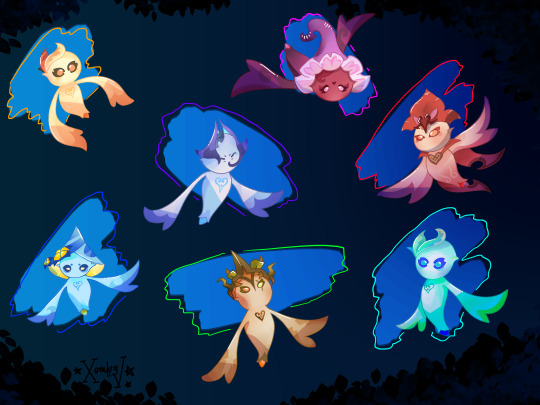
13 notes
·
View notes
Text
On Oaths and Ordeals (Temper Our Souls)
The Dark Shrine in Ghed'ahre has been empty for thirty years, since the previous Druid of Darkness was slain. Now, Rashnu Leyra prepares to undertake the druids' trials--if he succeeds, the mantle "The Dark" will be his. But it is, indeed, no easy thing to become one of the guardian druids of the Arishta Isles.
As told by Rashnu, as he becomes the Druid of Darkness. Set an unspecified, but fairly significant amount of time before the events of Ahriman's Prophecy and Rhen's Quest. Names several pre-game druids.
Chapter 1: On Choices and Companionship
2.5k words. No warnings, no spoilers.
It is a long trip, on foot, from Ghed’ahre to Aveyond. With traveling runes, that distance can be greatly reduced--but not eliminated, for traveling runes to Aveyond are a rare commodity indeed...
Read "On Oaths and Ordeals" on Ao3!

#Tei Writes a Thing#Fic: On Oaths and Ordeals#Aveyond#Rashnu the Dark#Vohu Manah the Bard#oh my goodness I have been trying to write this for MONTHS#the flood of inspiration finally hit but I was writing in the most absurd order#chapter 1 3 5 4 6 2 yeah sure that's how numbers work xD
4 notes
·
View notes
Text

Practicing and sketching Rashnu's armor
93 notes
·
View notes
Text
Spiritual Dieties
A/N: Just realised that I've included a list of god/esses BUT Christian will be excluded because theirs is too BIG, seraphims, archangels, and the names of who is what that is it's own seperate post -_- they're christian witches so even my own opinion of christianty (I don't hate them but dont love them either) I would still respect anyone who still follows it.
_________________________________________________________
Deities:
Divine status, quality or nature. A god or Goddess, a supreme being. Most well known in Persian/Norse/Celtic/Greek/Roman/Egyptian/Hindu/Pagan/ Christian Angels-Demons, etc.
Celtic Gods:
Alator: God of war and protection, name means “he who nourishes the people.”
Albiorix: God of protection and war, name means “King of the world.”
Belenus: God of healing, name means “Bright one.”
Borvo: God of healing waters and minerals.
Bres: God of fertility, tyrant ruler
Cernunnos: Horned god of Nature, fertility, the underworld, wealth and fruit
Esus: God of strength and human sacrifice.
Lenus: God of healing, associated with Roman god Mars
Lugh: God of the sun and craftsmanship, justice and ruleship
Maponus: God of music, poetry and youth
Nuada: God of healing, the sea and warfare.
Celtic Goddesses:
Brigantia: Goddess of rivers and waters, poetry and crafts
Brigit: Goddess of fire, fertility, healing, cattle and poetry
Ceridwen: Goddess and sorceress, poetic wisdom, prophecy, magic and rebirth.
Epona: Horse goddess, fertility and cornucopias, horses and mules
Medb: Goddess of sovereignty and motherhood
Morrigan: Goddess of seafarers, fertility, and abundance
Nemausicae: Mother goddess, fertility and prosperity
Saitada: Goddess of grief.
_______________________________________________________
Norse Deities:
Gods:
Baldur: God of Beauty, peace, innocence, rebirth.
Bragi: God of Poetry, music, the harp
Hodr: God of Winter, Blind God, god of Darkness.
Hoenir: God of Silence, passion, spirituality, poetry
Kwasir: God of inspiration, god of wisdom.
Loki: God of trickery, mischief
Magni: God of strength and bravery
Njord: God Of the sea, wind, fish and wealth.
Odin: The allfather, God of war, poetry, magic and wisdom.
Thor: God of Thunder and battle, protection of mankind.
Try: God of War and Justice, god of skies
Ulr: God of skis and bows, god of winter.
Ali: God of revenge and vengeance.
Goddess:
Eir: Goddess of healing and medical skill.
Eostre: Goddess of spring and dawn.
Freyja: Goddess of love, fertility, battle and witchcraft
Frigg: Goddess of marriage and motherhood, Queen of the gods.
Gefjun: Goddess of fertility and plough, abundance and prosperity.
Hlin: Goddess of consolation and protection
Jord: Goddess of the Earth, Mother Earth.
Nanna: Goddess of joy, peace, and the moon.
Nott: Goddess of the night and darkness.
Sif: Goddess of the harvest, grain and earth
Sigyn: Goddess of fidelity, mercy and mourning.
Skadi: Goddess of Winter, mountains and skiing.
Sol: Goddess of the Sun and healing
Vor: Goddess of Wisdom, knowledge and awareness.
Greek Goddess
Aphrodite
Hera
Athena
Artemis
Demeter
Hestia
Persephone
Gaia
Greek Gods:
Zeus
Hermes
Ares
Poseidon
Apollo
Hephaestus
Dionysus
Hades
Cronus
Eros
Helios
Atlas
Pan
Heracles
Prometheus
Uranus
______________________________________________________________
Roman Goddess Minerva
Venus
Ceres
Juno
Vesta
Diana
Janus
Bellona
Cybele
Fortuna
Victoria
Proserpina
Roman Gods
Apollo
Mars
Jupiter
Neptune
Mercury
Vulcan
Pluto
Saturn
Faunus
Flora
Pax
______________________________________________________________
Egyptian Gods/Goddess
Horus
Anubis
Osiris
Isis
Thoth
Set
Bastet
Hathor
Amun
Sekhmet
Nephthys
Ptah
Sobek
Ma'at
Geb
Nut
Shu
Ra
Bes
Tefnut
Khnum
Khepri
Khonsu
Neith
_____________________________________________________________________________________
Persian Gods/esses
Ahura Mazda
Angra Mainyu
Mithra
Anahita
Verethragna
Atar
Vohu Manah
Haurvatat
Mitra
Ameretat
Vayu
Zoroaster
Haoma
Rashnu
Spenta Armaiti
Indra
Aka Manah
Allani
Ahurani
Kshatra Vairya
Azhi Dahāka
Arash
Apam Napat
Fereydun
____________________________________________________________________________________________
Hindu Gods/esses
Shiva
Vishnu
Ganesha
Brahma
Hanuman
Krishna
Durga
Rama
Saraswati
Indra
Lakshmi
Kali
Kartikeya
Parvati
Agni
Surya
Varuna
Vayu
Chandra
Devi
Kamadeva
Sita
Kubera
Shakti
______________________________________________________________
What is similar?
One type of ‘Leader’ along with a ‘Mother’ a ‘son’ or ‘Consort’ a god of death, healing, creativity, the Sun, the Moon, wisdom, mischief, fertility. Or some deities symbolise a couple of things based on their story. Or domain that they rule over. But most do have similarities or cross over to other religions. For example the Roman gods are just the Tumblr edgy oc’s of the Greek Gods. {And the Romans twisted greek stories but those stories is what we in modern day take as 'canon' }
“Our gods are stronger and better than yours!” ha, just kidding.
30 notes
·
View notes
Note
Your book is inspired by ancient persia. Do you know any stories from ancient persia that deserve more recognition?
Also are there any modern books about this culture? Primarily about pre islamic counties and culture.
Hello anon! Apologies for taking a month to reply to this, but when I received your message, I hadn't written the whole story yet and I wasn't sure how many elements I would include. Now that I have finished my first draft, I can let you know for sure!
The plot of my wip; The Other Evil, is based on the Greek mythology story of Hades and Persephone but many elements of Persian mythology are mentioned since most of the book takes place in Iran. Many of the Iranian characters presented are Zoroastrian, and that is another reason to delve into the figures of pre-Islamic Iran, who are still talked about by modern Iranians.
Rashnu and Mithra


I'd like to connect Raphael with Rashnu, the yazata of Justice and Truth, one of the three judges of the underworld. There are a few hints that people see Raphael this way.
In the book, we get to observe the festival of Mehregan, and here the yazata Mithra is mentioned. Mithra is also an Afterlife Judge, and his duties are correlated with the light and the sun, truth and contracts, harvest and cattle. He is more complex than that but I have little space to properly present him here.
The Amesha Spenta

Image of the seven Amesha Spenta with prophet Zarathustra in the middle
The Amesha Spenta are seven divine entities emanating from Ahura Mazda, the God and Creator of the world. There are mentions of them throughout the book. An example is the mention of Spenta Armaiti, who is related to the earth and feminity.
The Fravashis

In Zoroastrianism, the Fravashis are divine, spiritual entities who serve as guides and guardians of individuals, communities, and even natural elements. The Fravashis connect humans to the spiritual realm and aid in the cosmic battle between good and evil.
In the book, some consider Niruvei (a creature I created) to be fravashis, but the Niruvei do not necessarily believe this about themselves, or they are on the fence about it.
Chinvat Bridge and the Two Realms

Depiction of a person crossing the Chinvat bridge
The fate of the dead is decided when they reach the bridge of the requiter - the Chinvat bridge. Crossing it will bring them either to the abode of light and song (house of song/praise/merit), or to the fall into an abyss of darkness, evil, and deceit (house of lies/abode of liars). In the House of Lies they will wait for the end of the world.
In Raphael's House there is the part which stands on the earth, and another part which is underground. The fate of people in each part is like the one in the House of Song, and the House of Lies underneath.
Mazanderan province and Divs

It's not confirmed that this is the same distant mythical area where heroes like Rostam go to fight Divs (demons) but that area had the name "Mazanderan" as well. Many modern people consider this to be the same, or overlapping area, so I wanted to play with this belief a little.
In the high mountains of Mazanderan live many Isior, a creature of my creation who eats Humans and has claws, large teeth, and talons. My main character, Ismene, would be considered a monster or a demon in this context.

Hero Rostam fighting the Divs
From that same area, it is said that the mythical hero Arash determined the limits of Iran by shooting an arrow.

Zahak - Fereydun - Mount Damavand

Fereydun defeats Zahak
After hero Fereydun defeated the snake wizard Zahak, he chained him in a cave within mount Damavand. When the time for the renovation of this world begins, Zahak will burst his bonds and ravage one-third of humanity and cattle.
Kind Hushang and the discovery of Fire

As the festival of Sadeh happens in the story, we hear about how King Hushang discovered fire. The King was walking in the mountains when he saw a black serpent and threw a stone at it. The stone missed and struck another rock instead. The impact caused sparks to fly, igniting a fire. Hushang recognized the fire as the divine gift it was, and declared its sanctity.
Jamshid, immortality, and the end of the world

Jamshid The Great, or Yima, was a legendary king. During his rule he invented the sciences, medicine, the arts and crafts, and introduced the Iranian New Year Novruzh. It is said he established the first Golden Age in Iran. Ahura Mazda gave him the power to reign over the angels and the demons, as well as a seven-ringed cup filled with the elixir of immortality, which allowed him to live long and observe the whole Universe through it.
But as Jamshid and the world got corrupted after a few thousand years. Then, the Creator decided to destroy part of the world with a deadly winter and frost. With God's directions, Jamshid created a huge cavern where humanity waited until the snow melted, and the waters left the land.
There is a conflict about immortality in my book. Jamshid's cup serves as a potentially historical reference for it.
Recommended books and resources:
There's a multitude of books about pre-Islamic beliefs of Iran. In my bookcase I have "Persian Myths & Legends: Tales of Heroes, Gods & Monsters by Shayani Sahba", and "Persian Myths & Tales: Anthology of Classic Tales" by Christine Ruymbeke. You can also visit eranshahr.com to learn about all the kinds and creatures of Persian folklore!
*** If there are any inaccuracies in the myths presented above or if I phrased something wrong, please message me and let me know so I can fix them!
5 notes
·
View notes
Text










GENSHIN IMPACT | Flowers and Dreams (AETHER VER.)
“Ever beheld blossoms more dazzling than fireworks, or cherished memories more tender than the sweetest dreams? As the sun and moon rise in turn, the trees and grasses shall forever remember this moment.”
#genshin impact#genshinimpactedit#genshinedit#gamingedit#genshinet#dailygaming#homuras#nahida#kusanali#aether#paimon#candace#nilou#sorush#mihir#rashnu#kaveh#mine
41 notes
·
View notes
Note
there's a lot going on with the moon, how does it tie in with music?
HOKAY so for context: I wrote this big honkin' response to an anon who wanted only a breakdown of lore on the Moons in Genshin. In that post, I briefly discussed the names of the three Moon Sisters - Aria, Sonnet, and Canon - but didn't go into detail about what the Sisters actually have to do with music.
So let's do that now!
We've had lots of evidence so far to demonstrate that music has a real, tangible effect on Teyvat. More specifically, singing and music are very closely related to Dendro:
Singing to Glaze Lilies in Liyue causes them to bloom
Chanted prayers (and prayers are related to music, as I'll address shortly) play a major role in the cleansing of the Sacred Sakura in Inazuma
Singing the "Great Songs" of Khvarena is believed to stop the Withering
The korybantes / kory drums awaken Rashnu the Pari from her slumber
The Aranara songs on the Vintage Lyre (which is specifically from Mondstadt, or so says the description) allow you to communicate, bring things to life and even transcend realms
The first Aranara was created after Rukkhadevata sang to the ley lines, causing the Ashvatta Tree to grow and produce the Aranara as fruit.
Ley lines follow the path of Irminsul's growth through Teyvat - and it makes sense that Irminsul would be associated with music, since it's also associated with myths and fairy tales. We learned in Inversion of Genesis that historical fact can be protected from deletion from Irminsul if it's couched in allegory (that is to say, it uses symbolic stand-ins to carry its hidden core message). I bring this up only because music and its creation is associated with the divine in many major world mythologies:
The lyre (in Greek mythology) was invented by Hermes the day he was born, and was at different points given to Apollo (as an apology for stealing his cattle) and to Amphion (his...lover? stepbrother? unclear...to help him build Thebes. Like, the music of his lyre could move stone.)
In Chinese mythology, Fuxi (the half-dragon demigod who also was thought to have molded the first human beings out of clay) invented the yaoqin (now the guqin) after hearing the sound of phoenix song, and bestowed his gift to humanity so they could use it during celebrations.
While not responsible for creating the actual instruments, Odin is believed to have taught humanity how to create music and poetry by introducing them to mead in a less-than-tasty way.
In Aztec lore, the wind god Quetzalcoatl kidnaps musicians from the court of the Sun and brings them to the world of humans so that it may also be full of music. There are also multiple gods who govern the realm of music (Huehuecoyotl, Xōchipilli).
In Vedic (and later Buddhist) mythology, the goddess Sarasvati was the embodiment of music (as well as rivers, knowledge, and "all things that flow.")
The last two points here are especially important, as in them, music is directly tied to flowers (Xōchipilli is the Lord of Flowers; Sarasvati is often depicted upon a white lotus), water (Sarasvati is the anthropomorphization of a river with the same name; Xōchipilli wears a mother-of-pearl talisman shaped like a water droplet), and the moon (pearls are associated with the moon; Sarasvati is often said to "shine like the moon" or "wear the moon in her hair").
There are two figures in Genshin so far that have a close relation to these symbols: Greater Lord Rukkhadevata, and Nabu Malikata (the Goddess of Flowers). As far as the latter is concerned, there's very little we definitely know about her and more that can be implied from information elsewhere.
During the Aranara questline, we learned from Arama that Nabu Malikata is a Seelie who managed to retain her physical form after the calamity that tore the Moon Sisters apart (see moon lore post). While we're still not 100% on the relationship between Seelie and the Moons, we know that the Sisters oversaw a union between a Seelie and an Outlander - so, at the very least, the Seelie defer to the Moons for some manner of guidance or counsel.
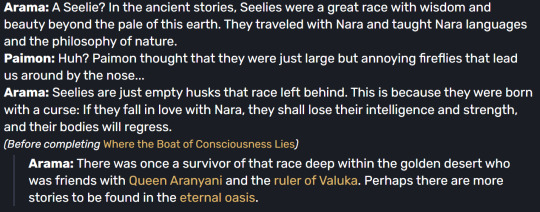
We also know that, while Nabu has retained her body, she still seems to be missing...something. This description from Dirge of Bilqis feels very...husk-y.

We know thanks to the Vourokasha's Glow set that the Khvarena (the Seelie-looking energy orbs that respond to the Great Songs and at various points in their lives are the Simurgh, the Pari, and water of the Amrita Pool) originate from Nabu.

Also, in A Drunkard's Tale, Vol. 3, we meet a "pale young maiden" who speaks an unknown language and plays a lute for the Seelie, possibly while sitting by the side of King Deshret's sarcophagus.
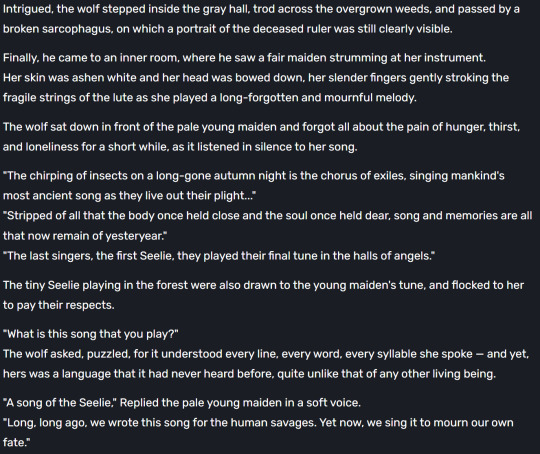
(I believed this figure to be Rukkhadevata on first read, but since the maiden refers to the Seelie as "we," it can be better assumed that this is Nabu Malikata playing the lute for her siblings.
If this is true, and it really is Nabu, then it implies that she and Rukkhadevata look alike? Which makes things between the two of them even messier, lore-wise. But that's for another post...hopefully.)
Let's circle back to the Greeks for a second.
The philosophies of Aristotle and Plato (two of the hard hitters when it comes to Genshin inspirations) are based on the theory of animism. The tl;dr of animism is that all living things (and depending on who you ask, non-living things) have a soul, and this soul can be acted upon separately from the physical form. So - that bush? It's got a soul. Water? Soul. Humans? Souls. Umbrellas? Maybe in a hundred years or so.
Since music was given to humanity by the gods, the act of a human creating music was considered a form of divine intervention - or possession.
A third Greek philosopher, who doesn't feature as prominently in Genshin but serves a huge purpose here, is Pythagoras. Much like other Greeks, he believed that music was divine in origin, and that it could be used to soothe or agitate the soul, depending on the tonal harmonies being played. However, Pythagoras took it an extra step by blowing the theory up to cosmic proportions.
Basically, Pythagoras (and his followers) observed that certain objects - like the strings on a lute - moved when they produced sound, and that the size and speed at which those objects moved affected the sounds that were made. Bigger things moved slower, and made lower pitched sounds; smaller, faster-moving objects made higher-pitched sounds. And so Pythagoras extrapolated: the planets and stars in space are very, very big. And they move very, very fast. So they must produce a sound. And this sound is SO loud and has been around for SO long that people were incapable of hearing it. The theory was later picked up and expounded upon by Johannes Kepler, who postulated that the harmonies between planets couldn't be heard, but could be felt within the human soul.
This concept is now known as musica universalis, or music of the spheres.
-
OKAY that's a lot of information! So let's break down how it all fits together.
We have three Moons, named after types (or parts) of music.
The Moons are divine in nature, and so is music - suggesting that they're the reason why humans on Teyvat have music at all.
The Moons are related to the Seelie (and the Goddess of Flowers), who for one reason or another are cursed to have their souls split from their bodies.
In Teyvat, music affects the movement and growth of elemental energy - Irminsul, Aranara, Sacred Sakura, other plants, etc.
Music, mythologically, also has an impact on the soul - hence why Seelie and parts of other beings' souls (Khvarena, the Pari) respond to it.
-
I don't really know how to end this post so let's wrap it up with some miscellaneous notes and baseless speculation:
Is all elemental energy soul-based? Because it's sure starting to feel that way. (There's definitely going to be a follow-up post about emotions and music. Just wait.)
How close are Rukkhadevata and Nabu Malikata?? Are they two of the three Moon Sisters? Are they parts of the same god?? Will we ever find out for sure??? And when am I going to stop mixing them up when doing my research!?!
In my OG Moon post I mentioned how the Sisters are said to control heroes' fates (see Xiphos' Moonlight lore). If the Moons are related to music, and Irminsul responds to song, this may mean (literally or figuratively) that the feeding of music through Irminsul can affect (or alter) how those heroes are remembered.
Venti knows all songs of past and future. And every day that comment becomes more and more sus.
Anyway thanks for coming along on this journey, hope it wasn't too hard to follow, and feel free to send more asks if you want a clarification or a new post on something!
4 notes
·
View notes
Text
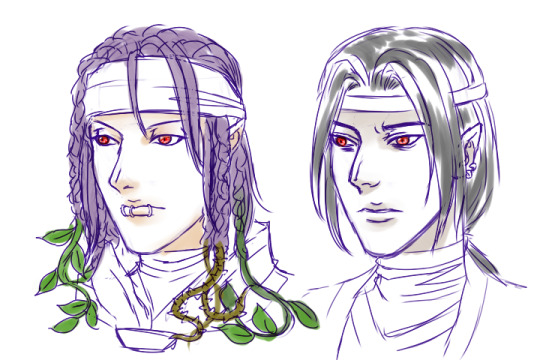
I was thinking "I should clarify my designs/mental image of the AV druids some more because of Lore (TM)", but LMAO I can't help thinking of the daeva all the time...
I've had this mental gag for the longest time that "Rashnu looks kind of creepy, and Nanghaithya looks more like the druid than him". Wanted to draw visuals to compare (also Nanghaithya's full face without the covering on his mouth).
Rashnu isn't actually fierce, he just... has permanent frown lines from years of overthinking. Nanghaithya has a few braids that can turn into vines and thorns (because of his Earth element thing).
I probably should make a more detailed character drawing/profile someday... I originally wanted to try to fanfic it, but it's been like 5 years and the words still aren't working.
This version of Nanghaithya is different than this one because the one pictured in this post is for a specific AU/canon divergent lore. Mostly canon compliant, but there's a few flights of fancy taken. That other one is more fully canon compliant.
#av1#aveyond#aveyond daeva#daeva#aveyond 1#nanghaithya#rashnu#druid rashnu#av rashnu#aveyond druid#av druid#Rashnu has pointy ears for a reason#not a vampire
7 notes
·
View notes
Text

"Over there is the place of life, the place of wonders, the place of my dreams!"
#oc#original character#Rashnu#ancient gods#ancient persia#art#drawing#traditional art#traditional drawing#color pencil#color pencil drawing#artist on tumblr#angel
4 notes
·
View notes
Text
Ah this is a cool idea! Your wips are very varied, the modern Sumeru AU is interesting to see, and I love the idea of the EiMiko one, that’s perfect XD
Alright, tackling my FLAME!
From Sunny Sky, a part-comic part-prose collab with Lumier where my Kintsugi (Wanderer) meets her Kuni (younger Dottore-made segment of Scaramouche) and they have their ups and downs in Kintsugi’s world, including impromptu Aranara babysitting:
For a brief moment, they just stared at eachother, both wide-eyed and trembling, Kuni’s tears running dry as he forgot to blink in surprise. The youkai was just as scared… of him?
Beady eyes, a nervous-looking little smile. Could it be hiding rows of puppet-eating teeth…?
For another few beats, nothing happened at all. Neither of them moved. Kuni withdrew into the bush a little more, eyes fixed on the creature. He sniffled. “…Um…”
“S-Scary Nara… please…” The little being was pointing at something, turning away in apparent fear as it did so. Despite his own better judgement, Kuni followed the stubby, trembling little hand.
Nearby were some purple flowers. They were wilting, sadly drooping as if they were crying, too.
“Nara’s crying is… making the viparyas really sad…”
From the upcoming rest of Rainjade Ovation (Wanderer and Furina visit Chenyu Vale, yes this is still very much happening!!):
Lush, green, forested mountains as far as the eye could see, shrouded in life-giving fog, almost glittering with vitality. Rivers, snaking through it all and cascading down the steep slopes in waterfalls catching the morning light. Estuaries ending in countless little islands, too many to keep track of as he flitted over them like an arrow, too swift to properly take it in, almost making him regret his own speed as he stirred the fog enveloping him, taking hold of him, welcoming him into Liyue properly.
From the ongoing Chromatic Ode of Annoyance (Wanderer's POV on this year's Sabzeruz Festival):
A yawn, a leisurely stretch that had him gritting his teeth with impatience. “…Oh… it’s you, Yasnapati… Lady Sorush left me to tell…” Rashnu blinked, bleary, attempting to focus. “…To find the people of… Zubayr Theater? And also, you. To tell you we are here, in the forest. Me, Mihir, and Sorush.”
“I can see that,” he gnashed. “And?”
“And… Lady Sorush, miss Nilou, and their guide have gone to the Fane of Ashvatta to dance the Dance of Sabzeruz.”
“A dance,” Durin murmured excitedly, hiding in his haori. “See, see? It’s nothing bad!”
Sunny Sky again:
Moss? Kuni looked around, then to the purple flowers garlanding his neck and chest. “I’m not like moss,” he spoke, gathering the bit of pride remaining to him, fanning it with his newly ignited anger at Ao-san – allowing himself to really feel it, no longer dulled by fear, obligation or respect. “I’d rather be like one of these.” The flowers were pretty and bright – and they stood on their own, not needing any support save their own roots.
Arabalika gave a sage, satisfied nod. “See? Young Nara is tall, proud, blooming. Arabalika knows these things.” He glanced at the table, stealthily nudging some of the mushrooms towards Kuni, but the young puppet ignored them – too deep in thought to notice.
And more Sunny Sky bc this is my biggest WIP and the others’ unpublished stuff isn’t that much yet XD
“Eat first.” Kuni pressed his bowl into Kintsugi’s hands. It was warm, and grounding, and somehow shut him up immediately – especially paired with that familiar scent, moments before he realized just what Kuni had cooked.
Normally he was the one fussing over others and bullying them into taking care of themselves. It was very strange to be on the receiving end from his own brand of mother henning, now.
Kuni had made shimi chazuke.
Bonus E from Sunny Sky because I want to and Lumier has me up to so many fun things with her boy annoying my boy:
Enteka’s ‘something extra’ were a few sugared, perfectly ripe sunsettias and candied Ajilenakh nuts, the latter fitting snugly in his pocket and the former fitting just as snugly in his mouth immediately. Kuni eventually left the café munching on the last of them, musing over his findings so far. Ao-san was well-known and loved here. He needed a new revenge plan – the older puppet’s reputation was already excellent. Somehow.
People and murmurs were following him. He could pick up on them with his sharp robot hearing.
“Could it be that he finished his thesis? He seems so happy…”
“Maybe he found love during his stay in Fontaine,” someone practically swooned, making Kuni make a face in confusion and mild disgust. Why would he ever go there?
“Maybe it’s a nervous breakdown. Should we take him to Bimarstan for a checkup?”
Kuni grinned brightly, walking faster.
“…Wait, where did he run off to? We lost him!”
“Maybe he flew into the forest like before! …Hat Guy!!”
I am tagging… @missvulpix212, @imlight, @seveninchesfrominsanity, and @glitchymareep if they want to, as well as anyone else that does – and very on brand couldn’t help it, your word is LIGHT! 😄✨
Acrostic: a WIP Game
Rules: you will be given a word. Share a sentence/excerpt from your wip(s) that begins with each letter of the word.
Tagged by @canonical-transformation here, and my word was JUDGE.
🌱
—just as she is crying now; letting loose these same silent tears that taste of something she has no name for.
There had been something utterly impossible about that dream, something as confusing and out-of-place as the absolute devastation and horror written across Lumine's face that day, right before they'd pulled Nahida into their arms and held her like they were afraid she'd shatter. Something about Irminsul, something that hurts to think about, something that should not have been
🌟
Unnerving as the scientist is, Stelle might visit the station again, in time; something about Herta’s simulated universe, about the mysteries surrounding the Aeons, about Akivili…feels important, as if something deep within her is sitting up attentively, saying watch and listen, this matters.
And she feels the same call from the Express, even stronger, but somehow…different. When she first steps aboard, she’s greeted by a sense of welcoming, acceptance, and safety, resonating through her bones and dulling the Stellaron's wrathful hunger.
It feels…like coming back to a home I never knew I’d lost. Is this…the power of the Trailblaze?
“Quite likely,” Himeko says, and Stelle belatedly realises she’d said that out loud. “All of us felt like that, to some extent, when we first stepped aboard"
🌸
“Don’t be silly, child. Of course it’ll grow,” the old adeptus chides. “All things that live can grow, and change.”
“I am not human,” she quietly protests. “I was constructed to be immutable; eternal and unchanging.”
“Ah, yes,” Madam Ping hums, and moves on to detangling another section of hair. “But several great changes have already found you. What’s one more? Life…life finds a way, especially when you least expect it.”
She considers it, sipping the rich, flavorful tea as Madam Ping works through her hair from the ends on up. Before, the length of her hair and nails never changed, nor did her body perform any of the other functions humans require. It still does not—she has not found herself needing food, sleep, or breath—and yet, she is constructed primarily from Irminsul wood. If exposed to enough dendro energy, for long enough, will her hair grow? Or did it always have the capacity to, had Ei not held her in eternal stasis?
⚡
Go home and rest, Ei, her sister had said, as though sending her away didn't break both their hearts. I'll be fine. You just focus on healing, as though Ei wouldn't give everything she was and could be for her twin.
Go home, as though Makoto still considered this backwater village where they'd grown up under the shelter of the Hakushin Clan, this place she'd likely never see again, her true home, not the palace they'd seized with fire and steel.
🍃
Even their voice is near-identical, if noticeably younger and carrying a subtle accent he can’t immediately identify.
“Apologies,” Cyno manages to get out, feeling oddly wrong-footed. “I thought you were a colleague of mine—you looked similar, from across the room.”
“No harm done,” they reply smoothly; but as they turn back around, Cyno glimpses something else behind the genial smile, and with an odd sense of relief, he soon collects his order and makes his way back to the comfortable familiarity of the Matra offices, resolving to dive into his work and put the unnerving incident out of his mind. And yet, the memory of the chance meeting with Rukkhadevata's near-doppelganger and the implications it raises churn away in Cyno's mind all morning, sending his thoughts scattering in all directions no matter how much coffee he drinks to try to pull them back in line. At last, with a frustrated sigh, he shoves the mess of documents concerning the paper trail he's been trying to trace back into his evidence files and locks the cabinet, switching his Akasha to a call.
The recipient picks up after the second try, dark circles under her eyes and hair a mess from sleeping at her desk once again. “Cyno? What’s up?”
More proof—the stranger this morning had been well-rested and alert, with their hair pulled back in a series of complex braids. “Rukkhadevata, I’m sorry if this is prodding at old wounds, but do you have any blood family?”
No pressure, but, @sunjinjo @windcarvedlyre @stardustdiiving (and anyone else who wants to) feel free to give this a try! Your word, should you choose to accept it, is FLAME
23 notes
·
View notes

